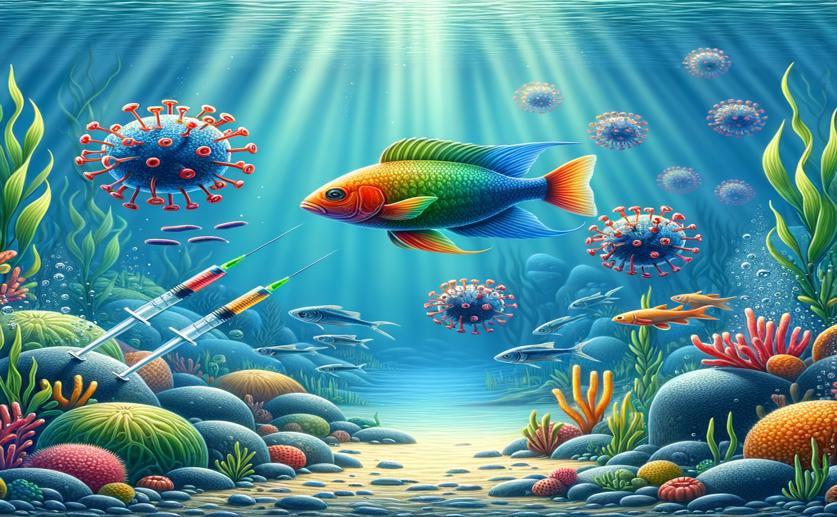
Early Insights on How Fish Immune Systems Fight Viral Infections
Jenn Hoskins
25th July, 2024

Image Source: Natural Science News, 2024
Key Findings
- Researchers at Hunan Agricultural University studied the immune response of grass carp to Grass Carp Reovirus (GCRV) infection
- The study found that the mRNA levels of BF/C2A and BF/C2B in grass carp increased with GCRV replication, indicating their role in the immune response
- Excessive inflammation and high BF/C2 mRNA levels coincided with peak GCRV replication, suggesting that hyperactivation of the complement system can lead to severe inflammation and tissue injury
References
Main Study
1) Preliminary study of BF/C2 on immune mechanism of grass carp against GCRV infection
Published 24th July, 2024
https://doi.org/10.1186/s12864-024-10609-3
Related Studies
2) Overview of complement activation and regulation.
3) The complement system in teleost fish: progress of post-homolog-hunting researches.
4) Complement system of bony and cartilaginous fish.
Journal: Fish & shellfish immunology, Issue: Vol 10, Issue 3, Apr 2000



 11th July, 2024 | Jim Crocker
11th July, 2024 | Jim Crocker